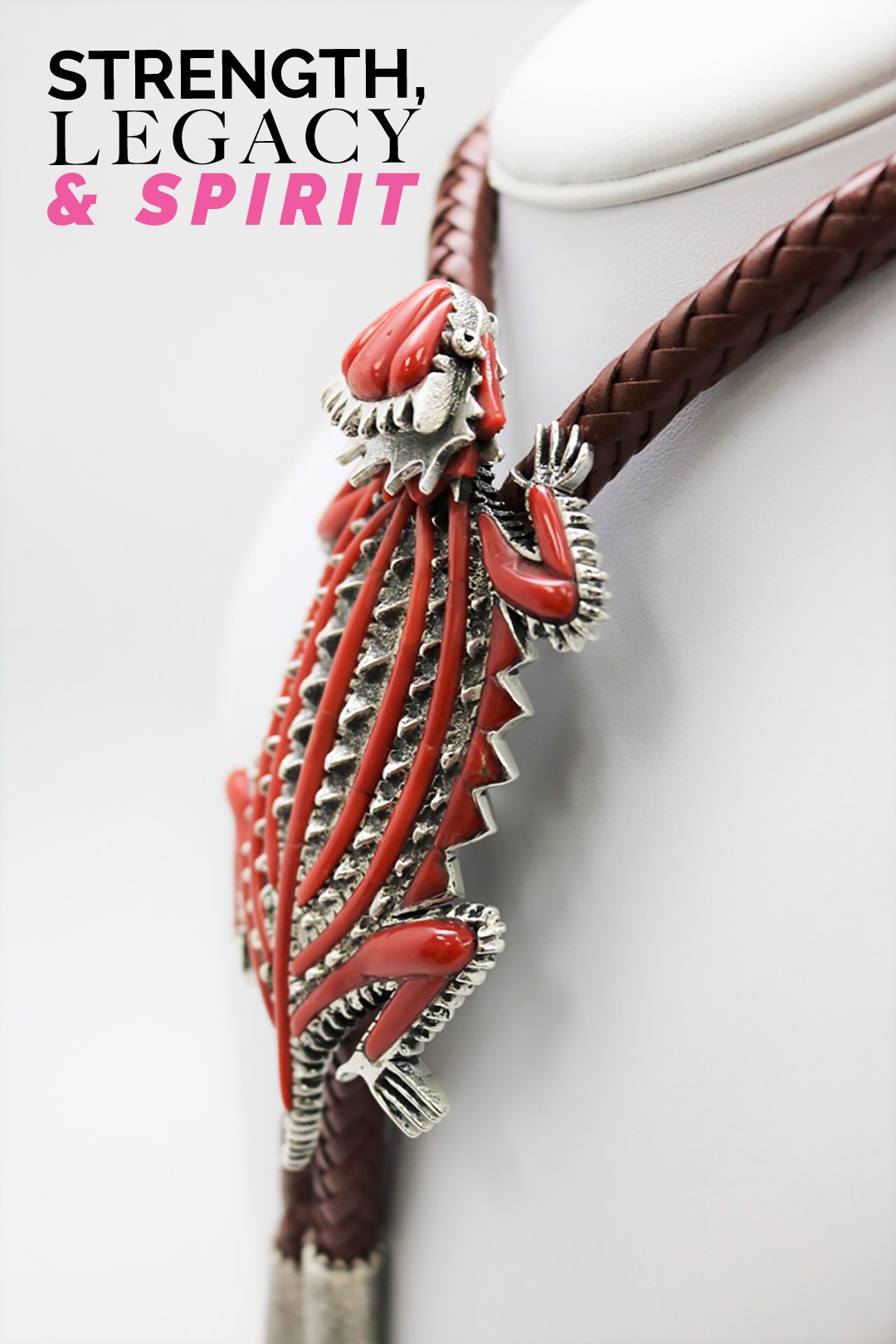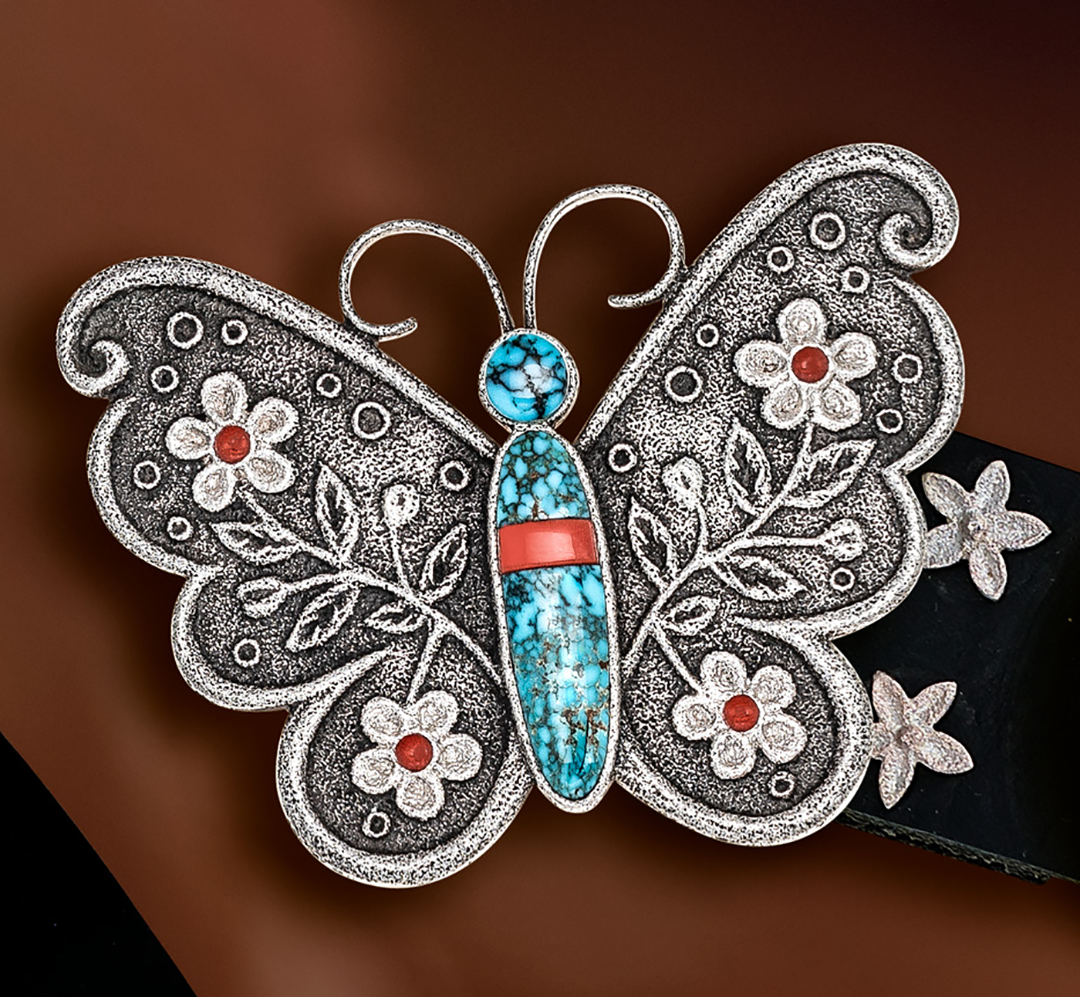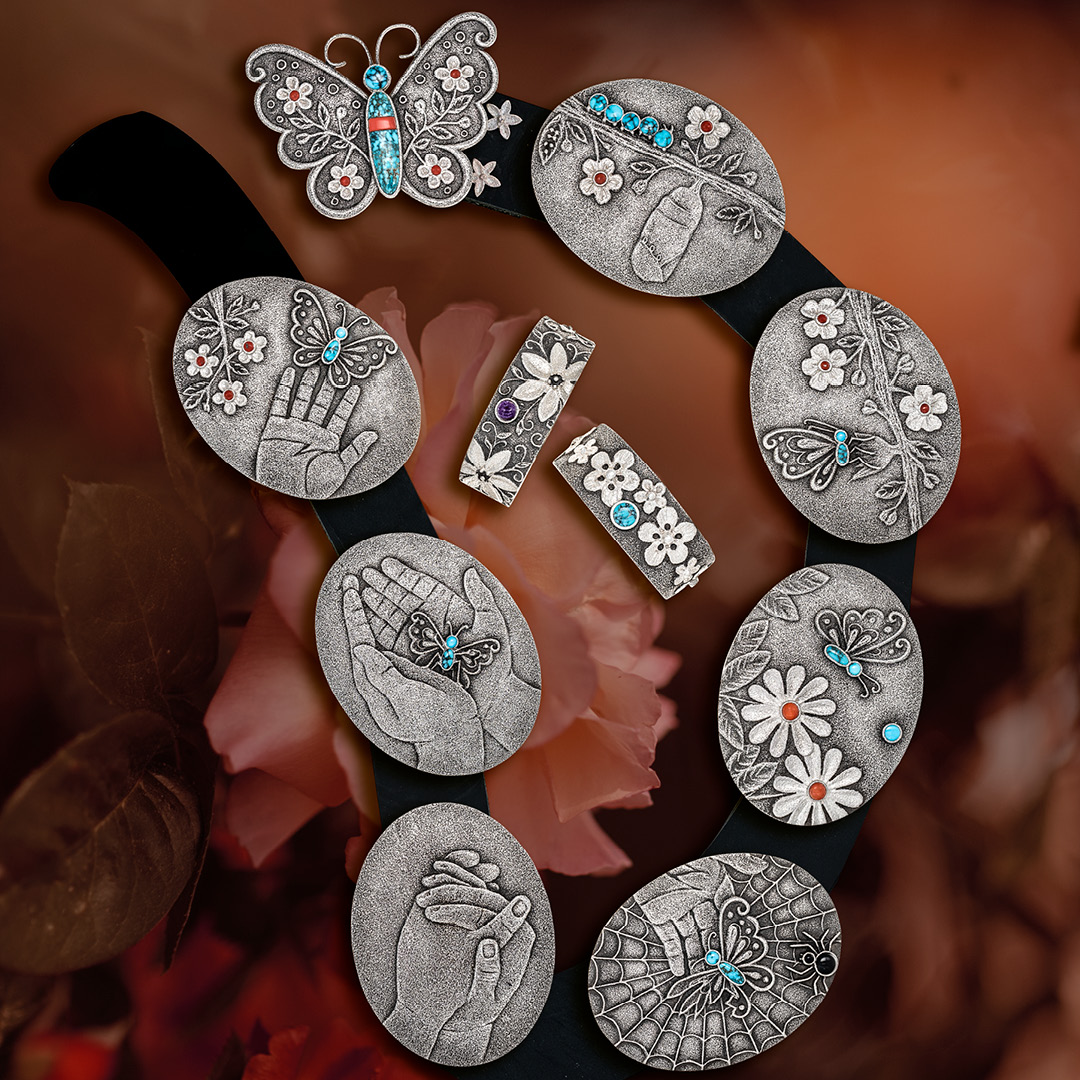Collectors of Southwestern jewelry all over the world are familiar with the unique delights of tufa cast jewelry. The Diné or Navajo people of the American Southwest are particularly well-known for their astonishing sand and tufa cast pieces.

Navajo Silversmith Philander Begay, Red Coral Bolo
The organic look and feel of finished tufa cast jewelry is evocative of the generations of silversmiths who have handed down the practical techniques, creative fire and the essence of the land and people as one.
Creating tufa cast jewelry is an intense physical process. Finished products are the result of creative excellence and sincere mastery of diverse skills, Diné silversmiths are recognized around the globe for this high level craftsmanship and artistry, and we are delighted to answer some common questions about tufa cast jewelry from the Southwest.
How It's Done
Compressed volcanic ash forms the porous tufa rock that is found on the Navajo reservation in New Mexico. Artisans collect the tufa and and use it as the carving and mold material for creating finished jewelry. Tufa has a porous nature which is responsible for the signature look and texture associated with tufa cast jewelry.
The texture of the earth, the pressures exerted on the mold, the fire and the cooling, all combine to leave a distinctive, unique surface loved by collectors of tufa cast jewelry everywhere.
Artists begin the process by preparing the tufa stone. The stone is cut, cleaned, and the sides that will create the mold are rubbed vigorously together until they are flush. The finished design is drawn and then carved directly into the tufa, creating a perfect mold for the finished piece. The artist will calculate the carving to include a vent and sprue hole where the molten silver will be poured.
The tufa stone has to be carbonized before molten silver can be poured into it. In the video below, you will see Philander Begay complete this process with a gas torch. The two sides of the stone are sooted and bound, ready to receive the metal.
Melting and pouring the silver is an exciting and dangerous part of the process. Heated to its liquid state, the exact amount of needed molten sterling silver is carefully poured into mold.
Patient waiting for the mold to cool ensues … once cooled, the mold is opened, and the excess tufa is gently cleared away, as well as the extra silver from the sprue hole where the metal entered the mold.
The work to complete the jewelry begins and includes all of the skills necessary to fulfill the original vision. Depending on the design sawing, sanding, setting stones, oxidizing, overlay work, inlay stones or bezels for stones are created, polishing cleaning and buffing will all be part of the silversmithing process. All of these processes will be carried out with great care not to disturb the earthy texture of the tufa where it is part of the finished piece.
The original tufa mold is often used only once, making many tufa cast items one-of-a-kind collectibles.
Watch Navajo silversmith Philander Begay pour a tufa cast mold from our shop in Albuquerque.
Tufa cast jewelry is in a distinctive class of its own. Today's Native American silversmiths merge their individual artistry, vision and hard-earned skills to create astonishing contemporary artworks grounded in earth-centered traditions.
With the respect due the cultural and historical significance of this art form, the creative and skillful mastery of technique, and the undeniably beautiful results, tufa jewelry is often considered Legacy or heirloom jewelry, to be handed down for many generations.
Sunwest is delighted to offer tufa cast jewelry through our wholesale showrooms and Santa Fe gallery location. If you are interested in tufa cast jewelry, browse our handmade website, contact your sales rep or contact our Santa Fe store for more information on available items.

Navajo silversmith Paul Livingston, Tufa Cast Naja Pendant on OxyBeads©

Navajo silversmith Rebecca Begay, Tufa Cast Concho Detail

Navajo silversmith Rebecca Begay, Tufa Cast Concho



